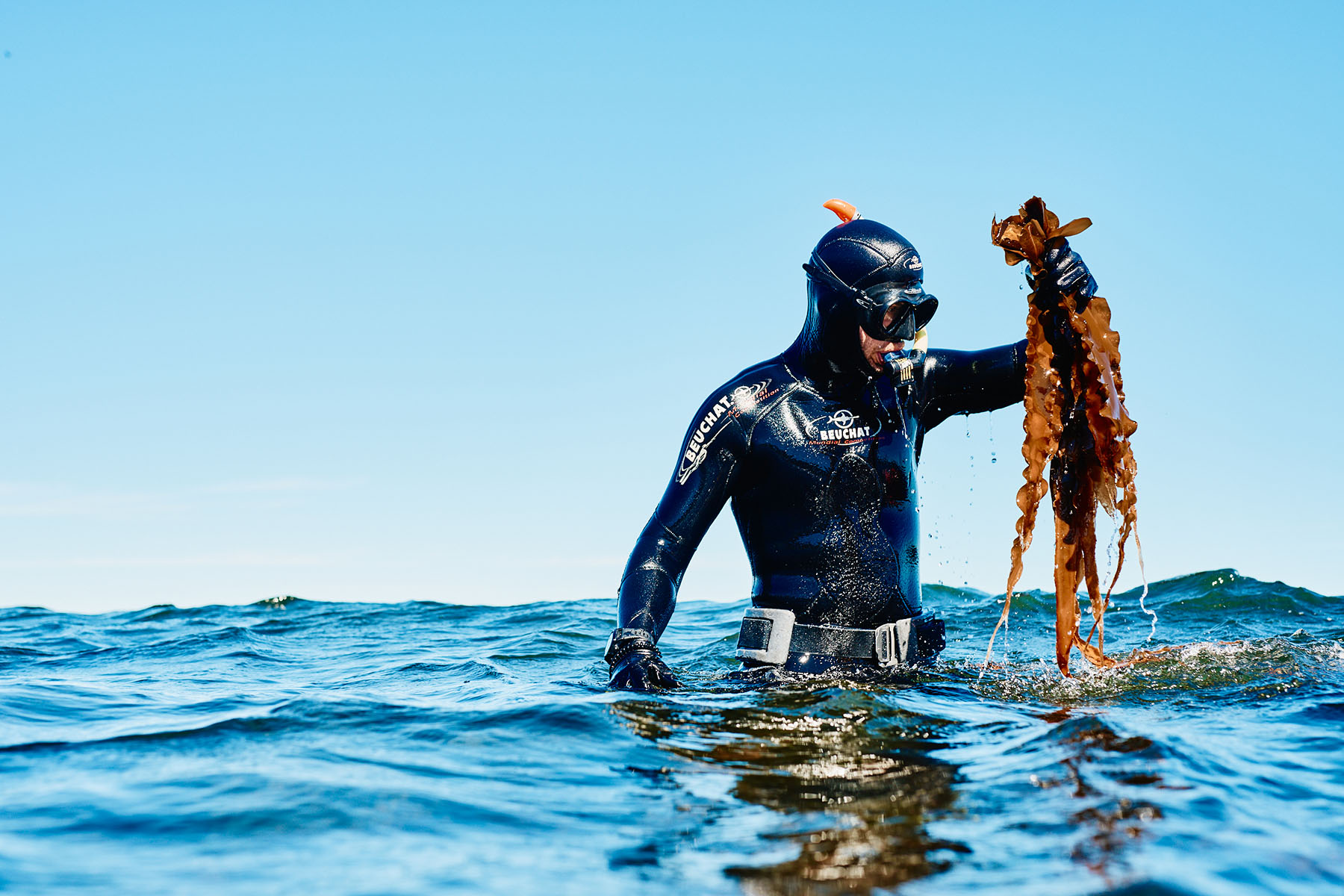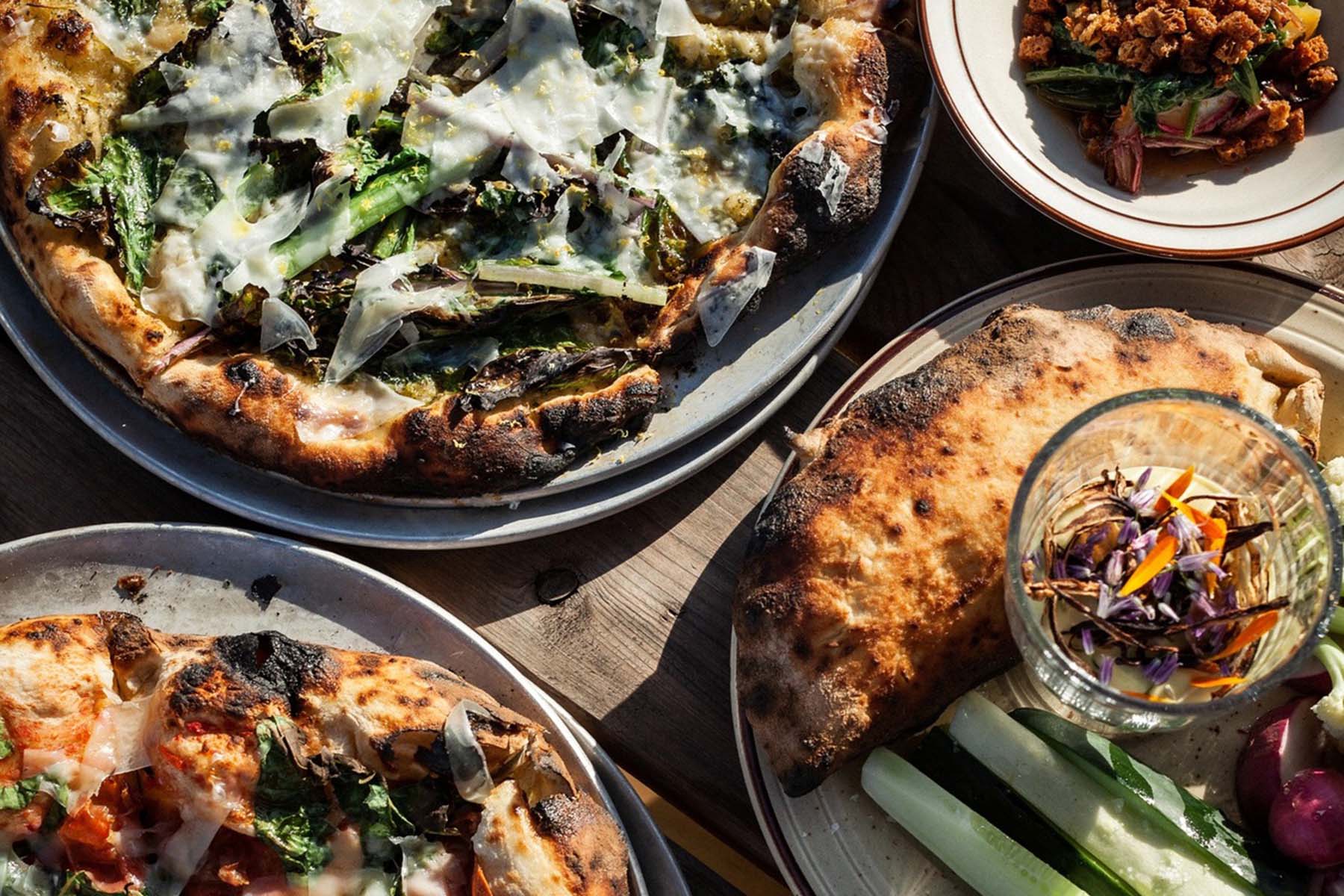It’s fall on Fogo Island, and men standing on small fishing boats brave the cold North Atlantic waters to pull out fat, glistening Wild Northern Cod using a handline — the way the fish has been caught in these small communities for 400 years. One line, one hook, one fish. This sustainable fishing method produces minimal by-catch and guarantees a superior product. The traditional way of fishing has made a comeback, thanks in part to Shorefast, a social, not-for-profit enterprise with the mission of preserving the island’s cultural heritage and economic development. The Fogo Island Fish fishers are paid a premium for their superior catch. The cod — along with crab, shrimp and more — is processed on the island by the Fogo Island Co-operative Society before being shipped to high-end restaurants through distribution partners. Because Fogo Island Fish is weather (and human) reliant, quantities are limited and vary greatly from year to year, a factor that contributes to making them even more appealing to the fine dining chefs in Toronto, Ottawa and Calgary who have come to appreciate the inimitable flavour and texture of the buttery catch.
From Newfoundland to British Columbia, enthusiasm for superior quality food like Fogo Island’s fish, is palpable. Restaurants willing to pay a premium for quality products are met with diners who are happy to do the same, knowing that what’s on their plate is sustainably produced with care by people who are passionate about their craft.

Founded in 2004 by a couple who wanted to make a difference, Ontario’s The New Farm does just about everything by hand, from sowing and harvesting to washing and packaging its organic vegetables. This hands-on approach allows the farm to plant delicate varieties, including salad greens, heirloom potatoes, rainbow beets and Japanese cucumbers, which wouldn’t withstand the industrial processing typically reserved for such crops. Their high-quality produce, particularly their exceptional greens, sets their salad mixes apart, and the extremely short supply chain is a key factor. “We don’t harvest anything until it’s already sold,” says cofounder Brent Preston. “We get the order from 100km Foods in the evening, harvest in the morning, put it on the truck that afternoon, and it’s on the client’s plate that night or the next day.” The increasing interest over the years validates the couple’s decision to stay small and focus on quality over quantity.
Québec’s O’Citrus has also decided to prioritize quality over quantity. Vyckie Vaillancourt’s incredible project of growing citrus just north of Montréal has born plentiful fruit, pun intended. With 120 trees and 10 varieties that include yuzu and finger lime, her limited production is sold exclusively to the lucky 15 restaurants on her roster. These chefs, who pride themselves on featuring only local produce, now have the luxury of incorporating local citrus into their cuisine. O’Citrus wants to experiment with growing other varieties of citrus fruit, such as bergamot but doesn’t plan to expand to maintain the exclusivity of its premium product.

When Dominic Labelle was a cook in Montréal, he longed for access to locally grown unusual vegetables. After completing his BA in Agriculture at McGill University, he founded Parcelles, a small farm in Québec’s Estrie region, with the intention of growing vegetables exclusively for restaurants. He selected his first seeds from a catalogue, choosing what appealed to him in terms of flamboyant colours and unique shapes. What sets Parcelles apart is the cultivation of over 100 rare and unconventional varieties of vegetables and herbs. These items are exclusively served at their own farm-to-table restaurant on the premises and at approximately 15 other restaurants in Montréal, all proudly showcasing their provenance. Some vegetables, the puntarelle, a variety of Italian chicories, have gained a certain mystique around town, attracting chefs and crowds alike.
Un Océan de Saveurs’ sustainable seaweed is also sought after, particularly by Québec’s chefs. The 15 or so seaweeds are hand-harvested in the Gaspésie Peninsula, dehydrated and then shipped across the country to discerning chefs. Inspired by a simple question — “Why isn’t there edible sea salt made in Québec?” — Manuel Bujold Richard founded Sel Saint Laurent. The company hand-harvests salt from a depth of 200 metres in the estuary of the St. Lawrence River, where the Labrador Current carries water from the Arctic. The resulting crunchy diamond flakes are produced in limited quantities and sold to fine grocery stores and restaurants.These specialty food purveyors share a common thread: a focus on humans rather than machines and a commitment to spending time caring for their products rather than rushing to produce more. In a world dominated by overnight deliveries and instant gratification, this return to a slower pace and quality results is refreshing.

At 8:30 am on a quiet residential street in Montréal’s Villeray neighbourhood, a line snakes around the corner, leading to the front step of a small wine shop. With the fervour of Swifties waiting to get their hands on concert tickets, these enthusiasts are here for the latest Pinard et Filles bottle. Adorned with beautiful labels created by renowned artist Marc Séguin, these distinguishable bottles are hard to come by. The artisanal winery, founded in 2011 by Catherine Bélanger and her husband, features 20 to 25 grape varieties harvested by hand and just as many vintages. “It borders on the experimental,” states Bélanger, who is also the owner and sommelier of Pullman, one of Montréal’s first wine bars to serve natural wine. “The wine season is short in Québec, and we must sometimes make spontaneous adjustments,” which means that these low-intervention bottles differ from year to year. It also makes them distinctive, interesting, and very sought after among wine lovers. Some of the more precise vin- tages rarely make it to wine shops and are mostly sold to restaurants. “We wanted to make wine for restaurants and bars from the get-go. We prefer having a passionate human being to present our product to potential clients.”
By Mayssam Samaha — *Insight: The Art Of Living Magazine – The Metamorphosis Issue.



